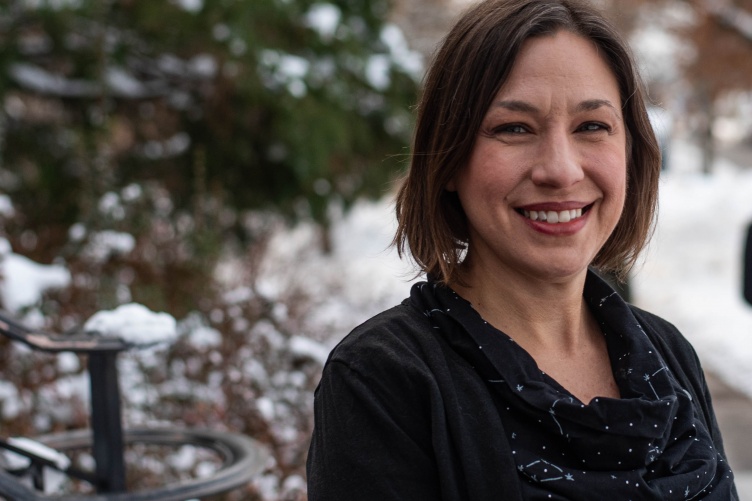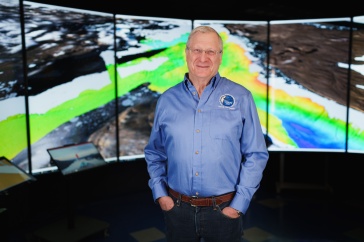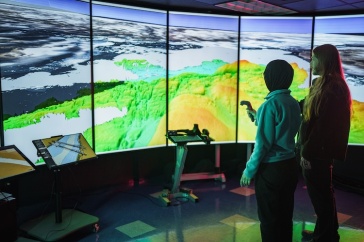
Editor's Note: This is the latest installment in a series featuring UNH faculty telling their stories in their own words.
Mary Stampone, associate professor of geography, state climatologist
"My grandfather loved The Weather Channel. It was on nonstop at his house. That was the start of my interest in everything outside.
I was always curious about nature. If I wasn’t in school or in bed, I was in the woods. I grew up in Omer, Michigan, a small town of about 400 people. My parents owned a local store. When I got home from school or work, I’d grab the dog and we’d go to the river. We’d walk or sit; I’d make a pine needle house and would sit and watch the bugs. And I’d take home rocks. Lots and lots of rocks. My dad had a flower bed and every rock I took home had to be saved there. When they moved, I made them take my rocks with them.
I was an A student in high school, but I didn’t like science and I hated math even though I was good at it. I got ribbons at science fairs, but I wasn’t really encouraged — no one told me I couldn’t do it, but no one said that I should, either. I had a great English teacher who encouraged me to write. So, for a while I thought I wanted to be a journalist, then maybe a lawyer.
When it was time to go to college, I was planning on prelaw. I hadn’t really thought about whether I’d be good at it, I was just thinking I wouldn’t have to take math and science again. It turned out they were both required.
I went to Albion College, a small liberal arts school in Michigan. I decided to get the math and science courses out of the way first thing. For science, I chose geology because I’d always liked rocks. The professor was so good — not just a good researcher but a good teacher. He wrote a note on a lab assignment that said, ‘You’re good at this. Let me know if you want to talk.’
In college, I started to get into climate change; I had been reading about it and was really interested in the issues. Senior year, my paleontology professor invited me to work with him and helped me design my honors thesis on paleoclimatology. I looked at the climate during the last ice age using fossils of certain critters that have relatives around today. You can track climate changes by where they used to be and where they are now, and whether it was warmer or colder during those periods.
When I was looking into graduate school, I decided I wanted to focus on how the Earth’s surface interacts with the atmosphere. Turns out geography is the discipline that does that; it’s about how all environments interact over time, and it explores the physical, social and cultural aspects of a place. I went to the University of Delaware; my master’s is in geography and my Ph.D. is in climatology.
My first job was at Shippensburg University in Pennsylvania. I taught the geography of the U.S. and Canada, conservation and introduction to atmosphere. I found my job at UNH through a posting on the Association of American Geographer’s website. When I saw it, I knew it was exactly what I wanted. I started here in 2008.
When I was really little, we’d go up to Lake Huron and I’d sit with my grandfather and he’d tell me all kinds of things about nature. He taught me how to count the distance of lightning during a thunderstorm. I thought that was the coolest thing. Sometimes I think, if I hadn’t taken that required science class my first year of college, where would I be now?"
Stampone teaches introduction to weather, natural hazards and disasters and climate and society. She is an affiliate faculty member of Earth sciences and the New Hampshire state climatologist.
-
Written By:
Jody Record ’95 | Communications and Public Affairs | jody.record@unh.edu

















































